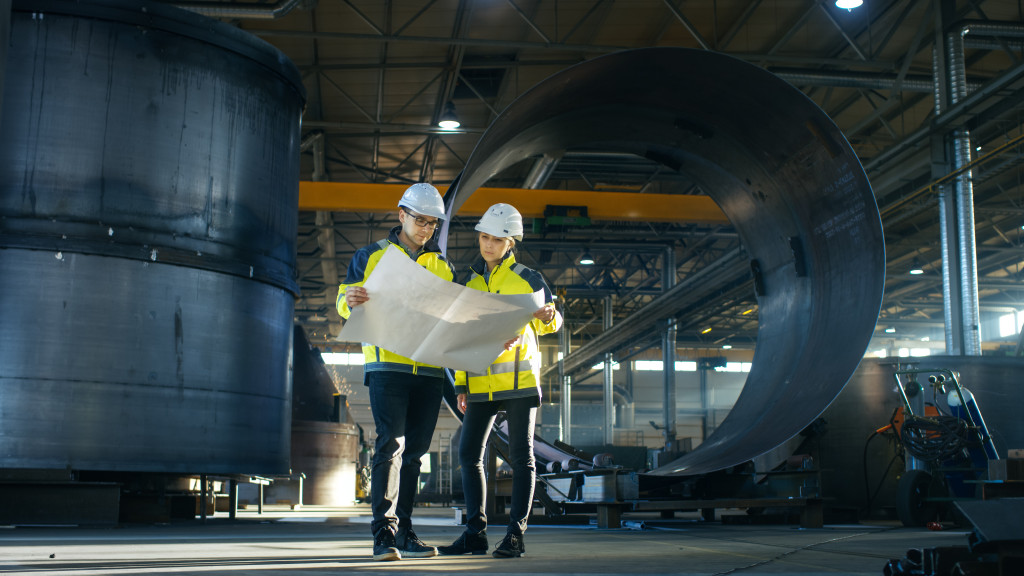- Invest in modern machines such as pneumatic linear actuators and CNC machining centers to improve efficiency and reduce operational costs.
- Implement automation software to streamline scheduling and inventory management processes, while providing detailed analytics.
- Train staff members on the use of new machines or techniques to reduce mistakes caused by user error.
- Carry out process redesigns by conducting audit inspections and running simulation exercises to identify areas for improvement and cost savings.
Having a well-functioning manufacturing plant is essential to any business, but it can be challenging to stay up to date with the latest technology and processes. Investing in the right tools, products, and services can make a significant difference in the efficiency of your manufacturing operations. Here are some investments that can help you innovate your manufacturing plant:
Machines
The most important investment you can make for your manufacturing plant is in machines. Newer machines often offer improved speed and accuracy over older models and can help reduce operating costs dramatically. Below are some examples of machines you can get to upgrade your manufacturing plant:
Pneumatic Linear Actuator
A quality pneumatic linear actuator is an ideal solution for automating production processes in various industries. These devices use compressed air to power their movement, which makes them more reliable than traditional motors. Pneumatic linear actuators are also simple to install and maintain, so you won’t have to worry about costly repairs down the line. Investing in these devices can provide great returns by improving efficiency in your production line and reducing labor costs.
CNC Machining Centers
CNC (Computer Numerical Control) machining centers are another machine that can significantly improve operations at your manufacturing plant. These devices use advanced software to control their movements, allowing for precise cutting and drilling of metals, plastics, and composites with minimal error. Investing in one or more CNC machining centers will allow you to quickly produce complex shapes while utilizing fewer resources than manual processes would require.
Automation Software
In addition to hardware investments, many manufacturers are also turning to automation software solutions. These programs streamline scheduling and inventory management processes and provide detailed analytics that allows you to optimize every step of production even further. Automation software investments help ensure that everything runs smoothly without any unexpected hiccups or delays.

Training Programs
Another critical investment for improving the efficiency of your manufacturing plant is training programs for staff members. By providing employees with proper training on using new machines or techniques, you’ll increase productivity and reduce mistakes caused by user error. Training offers invaluable investments for short-term gains like increased throughput and long-term benefits like employee satisfaction and loyalty, which translates into better performance all around. Other training initiatives include:
Software Training
Software training is essential for any manufacturing plant, as workers must be familiar with the industry-specific software programs used to manage and control production. These programs have a wide range of features and settings, so employees must be familiar with them before using them on the factory floor.
Safety Training
Safety is paramount in any manufacturing plant, and investing in safety training programs can help ensure that employees adhere to all safety regulations. This kind of training not only helps to protect workers and prevent costly accidents but also reduces the need for insurance premiums while increasing overall efficiency.
Process Redesigns
Last but certainly not least are process redesigns, where you look at existing procedures used at your facility and evaluate if there’s room for improvement from an efficiency or cost savings standpoint. By closely examining how things currently operate and mapping out what changes need to be made, you may find ways to significantly reduce waste or maximize output without investing heavily in new equipment or technologies. Here’s how to facilitate a successful process redesign:

Audit Inspections
Audit inspections are the first step in any process redesign and involve taking a closer look at all of your existing procedures. This consists in documenting every step and analyzing how each process can be improved. With this data, you can plan for making the necessary changes and upgrading your manufacturing plant.
Simulation Exercises
Once you have identified the areas for improvement, you can simulate the various changes and see what works best. By running multiple simulations, you can determine which upgrades will yield the most cost savings and increase efficiency. As a result, you’ll be able to make the best decision for your manufacturing plant.
The investments outlined above can help take your manufacturing plant to the next level, but that’s not all. So, don’t hesitate to invest in the resources and knowledge needed to achieve your business goals. With a well-executed strategy, your manufacturing plant can be running at full speed in no time.





